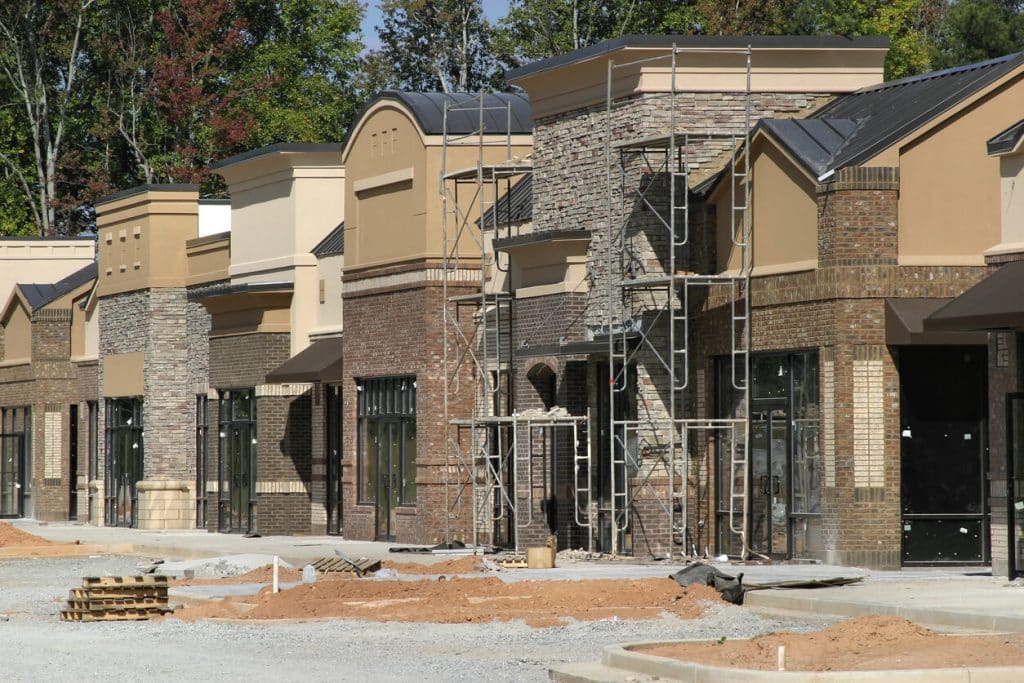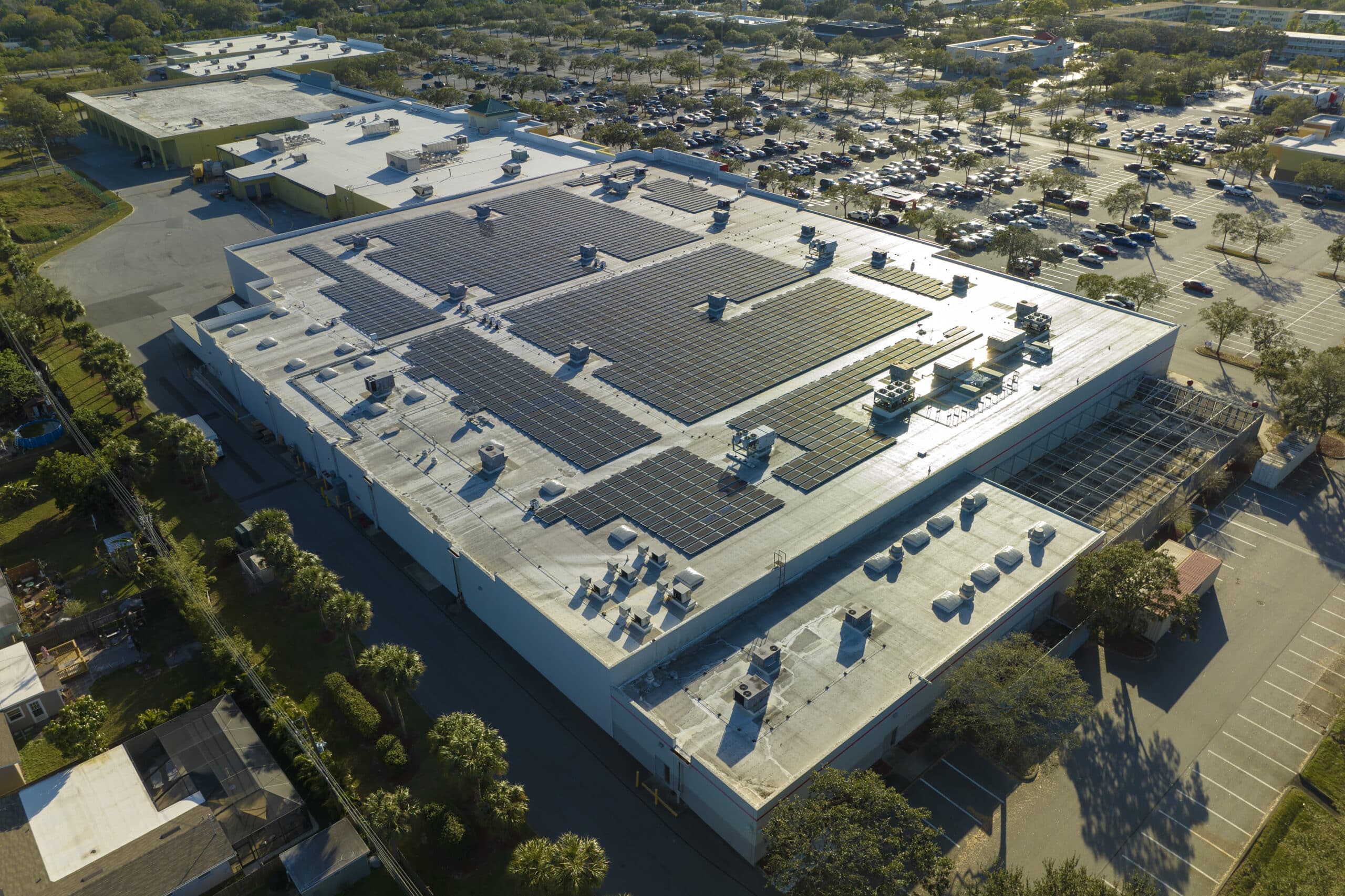Sustainability has become a cornerstone of modern commercial construction, and achieving higher building standards is…

Today’s commercial landscape is highly dynamic, and the ability to adapt to future changes and trends is important to any business concerned with longevity. Adaptable design in commercial construction offers a strategic solution, ensuring buildings can evolve with shifting business needs and technological advancements.
Schonsheck, a leader in the design-build sector, champions this approach, creating future-ready versatile spaces. This methodology not only caters to the immediate requirements of businesses but also anticipates and accommodates future transformations, making adaptability a cornerstone of modern commercial architecture.
In this post, we’ll examine the essence of adaptable design and how our design-build model embeds flexibility into the core design of commercial buildings, helping to future-proof investments and foster long-term business growth and sustainability.
The Concept of Adaptable Design in Commercial Construction
Adaptable design in commercial construction is the strategic approach of creating spaces that can be easily modified or reconfigured to meet evolving business needs, technological shifts, and market trends. This design philosophy prioritizes flexibility and functionality, ensuring that buildings can adapt over time, thus extending their lifecycle and enhancing their value.
Adaptable design encompasses various elements, from the structural layout to the use of modular components and the integration of scalable infrastructure to support future technological upgrades.
Planning for the Unkown
Incorporating adaptable design means planning for the unknown; it involves creating spaces that can be transformed with minimal effort and cost. This might include designing open floor plans that can be subdivided, using movable walls to alter spaces as needed, or installing infrastructure that can accommodate new technologies. The goal is to allow for changes in use or capacity without significant reconstruction.
Schonsheck’s expertise in the design-build domain leverages adaptable design concepts to deliver commercial spaces that are fit for present use and prepared for future changes. The firm’s approach ensures that buildings can easily transition through different functions or operational needs, reducing the need for costly and time-consuming renovations.
Making Long-term Investments
Adaptable design is about making long-term investments in property more sustainable and economically viable. It enables businesses to respond dynamically to market conditions and growth opportunities, thus future-proofing commercial assets in an ever-changing landscape.
Notable Benefits of Adaptable Design
Adaptable design in commercial construction offers significant benefits that contribute to the long-term success and sustainability of a business. Take a look at some of the key advantages.
- Cost Efficiency: Buildings designed with adaptability in mind reduce the need for expensive renovations or rebuilding efforts as business needs evolve. This foresight in design allows for more manageable, incremental changes rather than substantial overhauls, saving costs over the building’s lifespan.
- Sustainability: Adaptable designs often incorporate sustainable materials and energy-efficient systems that can be updated or modified as technology advances. This not only lessens the environmental impact but also aligns with green building standards and regulations, contributing to a more sustainable future.
- Flexibility for Future Needs: The primary benefit of adaptable design is its ability to accommodate changing business models, technological advancements, and growth. This flexibility ensures that the space remains functional and relevant, providing long-term value and utility.
- Market Responsiveness: Adaptable buildings can quickly respond to market demands, offering a competitive edge. As industries evolve, these spaces can be repurposed to suit new functions, making them more attractive to tenants and investors.
- Employee Satisfaction and Productivity: Modern, adaptable workspaces can enhance employee satisfaction and productivity by facilitating a more dynamic and stimulating environment. Such spaces can easily be reconfigured to support collaboration, privacy, or new work styles as needed.
The Design-Build Model and Flexibility
Schonsheck leverages a unique design-build model, which is inherently more adaptable in design, particularly concerning commercial construction. This is due to the integration of design and construction phases under a single contract.
Better Communication and Integration
With designers and builders working as one team, communication is more direct and efficient. This tight integration allows for real-time adjustments and modifications to the design, ensuring that the final construction can adapt to changing business needs without extensive delays or additional costs.
Collaboration for Innovation
The design-build model also fosters a highly collaborative environment where architects, engineers, and contractors work together from the project’s inception. This collaboration enables innovative solutions that incorporate adaptability into the core of the building’s design, ensuring that spaces can be easily modified in the future.
Reduced Cost and Greater Efficiency
By synchronizing the design and construction processes, the design-build approach reduces project timelines and costs. Early collaboration in the design phase identifies potential challenges and opportunities for adaptability, allowing for cost-effective solutions and preventing costly changes during construction.
High Quality and Consistency
Schonsheck’s design-build model maintains a high standard of quality and consistency throughout the project. With a single entity responsible for both design and construction, there’s a unified commitment to creating a building that meets the client’s current needs while being capable of evolving.
Flexibility and Adaptability in Design
Finally, the design-build process, with its emphasis on flexibility, ensures that commercial buildings can easily adapt to future technological advancements, market trends, and business models. This future-proofing aspect is a significant advantage, offering businesses the ability to stay current and competitive in a rapidly changing world.
Blending Technology and Sustainable Practices
Schonsheck seamlessly blends cutting-edge technology with sustainable practices to future-proof commercial buildings. By leveraging advanced technologies like smart building systems and energy management tools, Schonsheck ensures that commercial spaces can easily adapt to new technological trends, improving operational efficiency and reducing energy consumption.
Sustainable practices are embedded in the design process, from the selection of eco-friendly materials to the implementation of renewable energy sources, such as solar panels. These practices not only minimize the environmental footprint of the building but also ensure that the structures are versatile and can evolve with minimal impact on the environment.
Invest in Adaptability for Future Success With Schonsheck
Embracing adaptable design is key to future-proofing commercial buildings, and Schonsheck’s design-build model is at the forefront of this innovative approach. By investing in flexibility, businesses can ensure their spaces remain relevant and responsive to changing needs and technologies. Schonsheck’s commitment to blending technology and sustainability further enhances the longevity and efficiency of commercial properties.
Partner with Schonsheck to build commercial spaces that adapt, endure, and thrive in the face of future challenges. Reach out today to get started.



